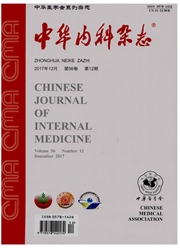

 中文摘要:
中文摘要:
目的 探讨在创伤后应激障碍(PTSD)状态下脊髓谷氨酸转运体-1(GLT-1)表达的改变及GLT-1激动剂头孢曲松钠(CTX)抗内脏伤害性刺激的作用.方法 SD大鼠分为5组:生理盐水对照组、PTSD内脏高敏感模型组、CTX预处理组、PTSD+CTX组及PTSD+CTX+二氢卡因酸盐(DHK)组.每组7只鼠用于内脏敏感性测定,均最终完成试验;每组10只鼠用于GLT-1免疫荧光检测,最终分别有8、9、8、10、7只完成试验.采用腹腔注射卵清蛋白(OVA)基础致敏联合连续单一应激(SPS)建立PTSD内脏高敏感大鼠模型;建模后7d采用结直肠扩张(CRD)-内脏运动反射(VMR)评估PTSD状态下内脏敏感性改变;采用CTX选择性诱发编码GLT-1的基因转录及上调GLT-1的表达;采用免疫荧光及激光共聚焦显微技术研究脊髓GLT-1蛋白表达水平的变化.结果 与正常对照组比较,CTX组大鼠脊髓背角GLT-1表达水平较高,吸光度(A)值显著高于正常对照组(141.38±2.91比106.25±3.32,P=0.001),而PTSD组则明显低于正常对照组(86.11±2.73比106.25±3.32,P=0.001);PTSD+ CTX组GLT-1的表达亦高于PTSD组(98.70±3.19比86.11±2.73,P=0.004).在20、40、60、80 mmHg(1 mmHg =0.133 kPa)压力下行CRD,术后7 d PTSD组在各压力水平下的VMR曲线下面积(AUCVMR)均显著高于正常对照组(P值均<0.05);PTSD+ CTX组在各压力水平的AUCVMR明显低于PTSD组(P值均<0.01);在80 mmHg行伤害性内脏刺激时,GLT-1抑制剂DHK可逆转CTX的抗伤害刺激效应(P =0.002).在40、60、80 mmHg下行CRD时,CTX组的AUCvMR明显低于正常对照组(P值均<0.05).结论 腹腔注射OVA基础致敏联合SPS可成功建立PTSD内脏高敏感大鼠模型.在PTSD内脏高敏感状态下,CTX可通过上调脊髓GLT-1的表达发挥抗内脏伤害性刺激的作用,可能成为防止或抑制PTSD状态下内脏高敏感性-痛觉敏化新的靶点之一.
 英文摘要:
英文摘要:
Objective To investigate the expression of glutamate transporter 1 (GLT-1) and determine the effect of GLT-1 overexpression on the viscemmotor response (VMR) to colorectal distention (CRD) following exposure to post-traumatic stress disorder (PTSD)-like stress.Methods A beta-lactam antibiotic,ceftriaxone (CTX) was used to selectively induce transcription of the gene encoding GLT-1 and upregulate GLT-1 expression as an agonist.SD rats were divided into five groups,including control group,PTSD group,CTX-treated group,PTSD + CTX group,PTSD + CTX + dihydrokainate (DHK) group.Seven rats in each VMR-CRD group eventually completed the study.Ten rats in each group were used to test immunofluorescence of GLT-1,however,8,9,8,10,7 rats completed the test respectively.The animal model of PTSD was established using basal ovalbumin (OVA)-sensitization combined with single-prolonged stress model (SPS).The alteration of visceral sensitivity following exposure to PTSD-like stress was evaluated by measuring the VMR to CRD.Spinal GLT-1 expression was evaluated by immunofluorescence using confocal laser scanning microscopy.Results By immunofluorescence analysis,CTX-treated rats exhibited an increased GLT-1 expression in spinal cord compared with the control group (absorbance:141.38 ± 2.91 vs 106.25 ± 3.32,P =0.001).Absorbance of GLT-1 in spinal cord was significantly decreased in PTSD rats,compared with the control rats (86.11 ± 2.73 vs 106.25 ± 3.32,P =0.001).GLT-1 expression in PTSD rats treated with CTX was significantly increased compared with PTSD group (98.70 ± 3.19 vs 86.11 ± 2.73,P =0.004).VMR to CRD significantly elevated in PTSD group compared with the control group at 20,40,60 and 80 mmHg (all P 〈 0.05,1 mmHg =0.133 kPa).VMR significantly declined in PTSD rats treated with CTX when compared with the vehicle at graded CRD pressure (all P 〈 0.01),however,one-hour pretreatment with selective GLT-1 antagonist dihydrokainate reversed the blunted VMR to CRD p
 同期刊论文项目
同期刊论文项目
 同项目期刊论文
同项目期刊论文
 Characterization of the Visceral Antinociceptive Effect of Glial. Glutamate Transporter GLT-1 Upregu
Characterization of the Visceral Antinociceptive Effect of Glial. Glutamate Transporter GLT-1 Upregu PKC gamma receptor mediates visceral nociception and hyperalgesia following exposure to PTSD-like st
PKC gamma receptor mediates visceral nociception and hyperalgesia following exposure to PTSD-like st GLT-1 overexpression attenuates bladder nociception and local/cross-organ sensitization of bladder n
GLT-1 overexpression attenuates bladder nociception and local/cross-organ sensitization of bladder n 期刊信息
期刊信息
